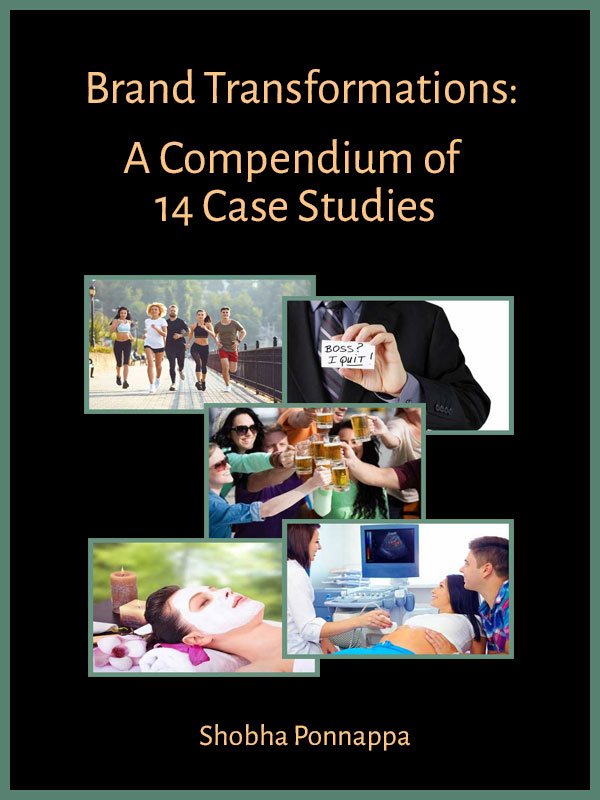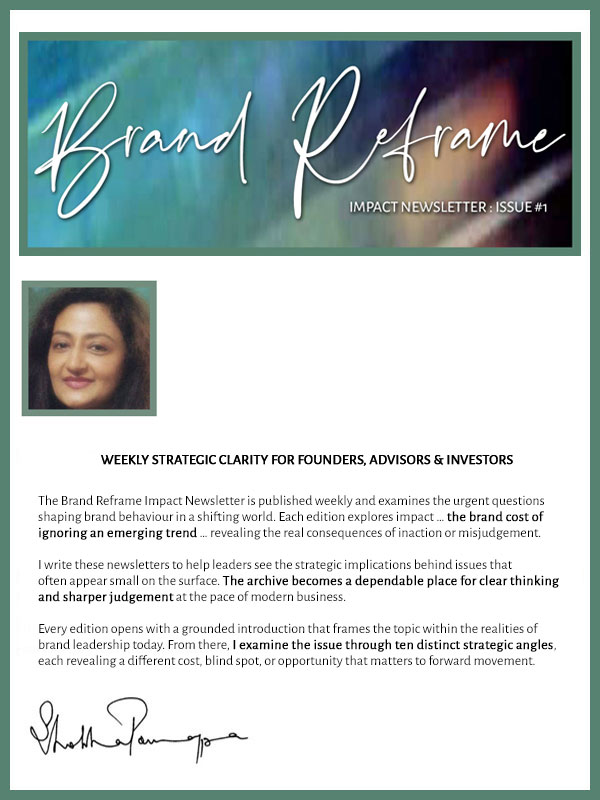
FOCUS: BRAND MESSAGING DISCONNECT | AUDIENCE: EXPERTS WITH IGNORED BRANDS
BY: SHOBHA PONNAPPA | BRAND BREAKTHROUGH STRATEGIST | 45 YEARS | 125+ CLIENTS
I helped a PTSD coach reframe his own trauma as a narrative defining his value … so his story could do the teaching.
This PTSD coach had lived the trauma he helped others navigate. A decorated war veteran, he had turned his own recovery into a specialised coaching practice … guiding clients through post-traumatic stress with remarkable empathy and insight. Yet despite his qualifications and results, he remained surprisingly invisible online. His website and social profiles read like generic life coaching material, with few signals of the depth and uniqueness he actually brought.
He barely referenced his military background or lived experience … believing it would sound too personal or dramatic. Ironically, this restraint blunted the very authority he had earned. He posted useful tips on resilience, but they lacked emotional signature. The story that shaped his credibility wasn’t being told. And because the message felt detached, so did the audience.
What I uncovered quickly was that his reluctance to lead with his own story came from a good place … but it was hurting his brand. He wanted to keep the focus on the clients, not on himself. He was uncomfortable “selling his trauma.” But what he hadn’t realised was that his credibility wasn’t in conflict with humility … it was the foundation of trust. The more he hid, the harder it was for others to step forward.
His audience didn’t want polished promises … they wanted someone who had survived what they hadn’t yet faced. He wasn’t just a coach; he was a translator between two realities: post-traumatic survival and functional daily life. But his messaging flattened that nuance. Instead of “I’ve walked this,” it read like “Here’s what science says.” That mismatch left his content cold, and his traffic quiet. The brand had a heartbeat … but the messaging muffled it.
I reframed his brand around one simple idea: “Let your story do the teaching.” This wasn’t about exposure or self-glorification. It was about giving his audience a living example of what integrated trauma recovery could look like. His story wasn’t the focus of the brand … but it became its compass. It gave context to his tools, relevance to his frameworks, and humanity to his voice.
From that point forward, every element of his brand was rewritten not as theory, but as lived intelligence. His homepage started with his real turning point … not just his qualifications. His tagline evolved to: “I help high-functioning men stop suppressing the story they survived.” His case study content shifted from performance metrics to emotional insights. He didn’t have to dramatise his past … he just had to stop hiding it.
I rebuilt the brand structure to balance authority, trust, and personal depth. His bio was reframed using turning points, not timelines. His core site pages followed a new narrative arc … experience, insight, then offering. Visuals shifted from stock photos of peaceful forests to portraits, textures, and environments drawn from his real-life past and present. The design language became calm but grounded … inviting, not abstract.
Most importantly, I developed a content strategy that made space for reflection, not just information. I helped him launch a monthly letter called Field Notes on Functioning, where he shared nuanced lessons from both combat recovery and civilian client work. His digital presence began to sound like what he had always embodied: Clarity without performance. Strength without noise. Insight without dilution. Slowly but steadily, engagement shifted. His audience no longer needed to be convinced. They finally felt seen.
Here are 10 strategic ideas developed (and several executed) to support the new brand direction:
Origin Story Series: A 3-part blog series unpacking the stages of his PTSD recovery journey … not for drama, but to establish authority and relatability.
Before/After Language Patterns: Posts showing how high-functioning men often hide PTSD in success-sounding phrases, and how he helps decode that.
Narrative Facebook Headlines: A rotation of storytelling-style Facebook posts that opened with a personal image, followed by a structured insight.
Field Notes on Functioning: A monthly email letter that tackled one hidden symptom per issue, linked back to a client case or memory.
Interactive Self-Assessment Tool: A downloadable quiz titled “Are You Coping or Compressing?” with a strategic opt-in lead magnet.
Homepage Copy Rewrite: A new landing section that began with: “This isn’t just what I learned. It’s what I lived.”
High-Trust About Page: A narrative-driven bio showing three flashpoints from his war service, recovery, and coaching integration.
Video Welcome Message: A 90-second introduction with first-person narration … not to explain credentials, but to show presence and calm.
Trauma Translation Series: Instagram carousel posts showing what PTSD often sounds like in high-functioning professionals.
Homepage session duration rose by 3.2x, with visitors reading all sections of the narrative flow.
Direct inquiries from military professionals and police personnel doubled via the referral page.
Facebook engagement increased by 4.5x, particularly on posts that included real language cues and personal context.
Newsletter open rates reached 41%, with frequent replies from first-time readers sharing their stories.
CONFIDENTIALITY CAVEAT: This case study represents a confidential engagement. For privacy, specific brand identifiers, campaign names, and project phases have been withheld. It has been shared with permission while preserving client discretion.
If you’re brand owner or manager seeking stronger brand performance, here’s a case study that could interest you: “Why This Invoicing SaaS Brand’s Blog Didn’t Earn Engagement.“
If you’re an investor seeking momentum for your portfolio brands, this case study I worked on may resonate: “How a Fast-Scaling Food App Swallowed Its Online Experience.“

"One BIG IDEA can turn brand stagnation into unstoppable movement. Spots are limited each week ... book your breakthrough session now."
Shobha Ponnappa
More Breakthrough Ideas … Case Studies & FAQs … from the Brand Messaging Disconnect Category
Case Studies
FAQ Insights
Download the 14-case collection and receive weekly insights to strengthen your strategic judgement.
Get my free Case Studies Compendium. Real transformations, clear strategic shifts, and practical ways brands regain traction.

You’ll also get my fortnightly Brand Reframe newsletter. with smart insights, distilled thinking, and focused ideas to help your brand.

Just fill in the form to join. Be part of our circle thriving on brand clarity, good judgement, and several game-changing tips.